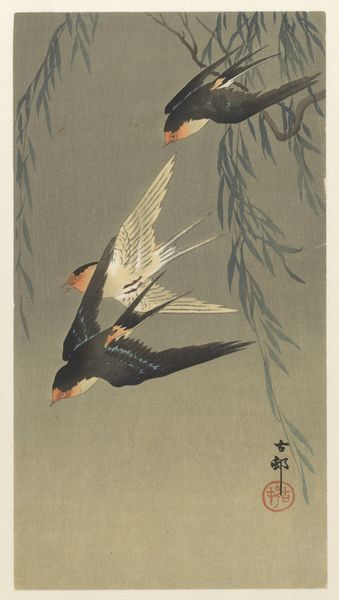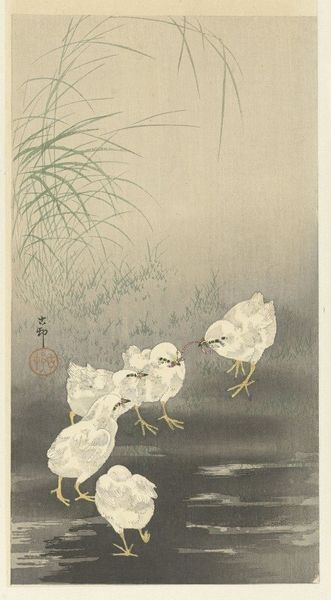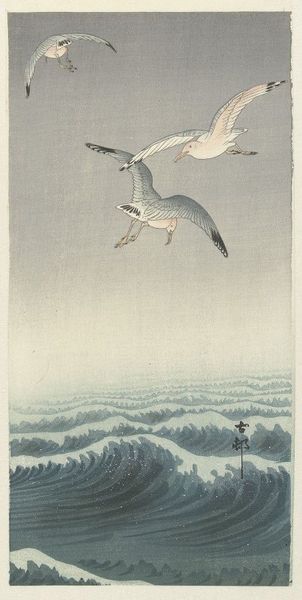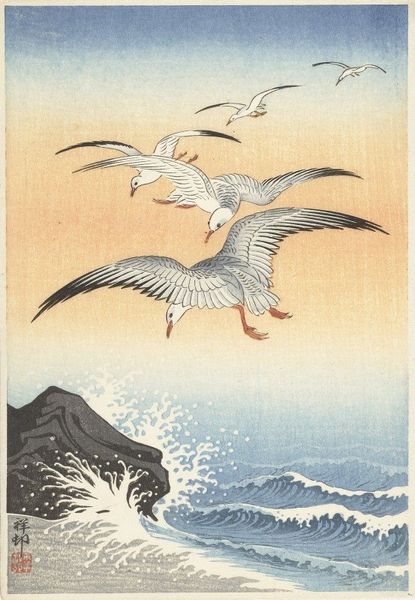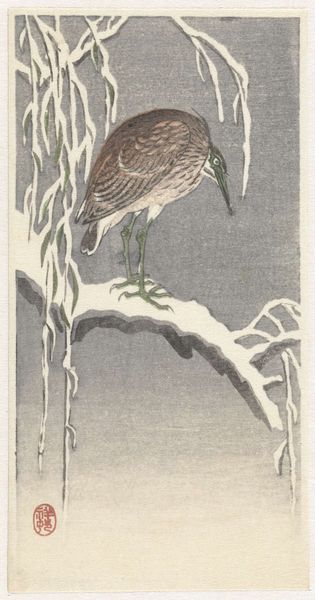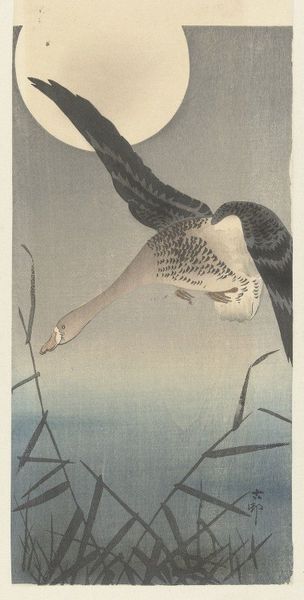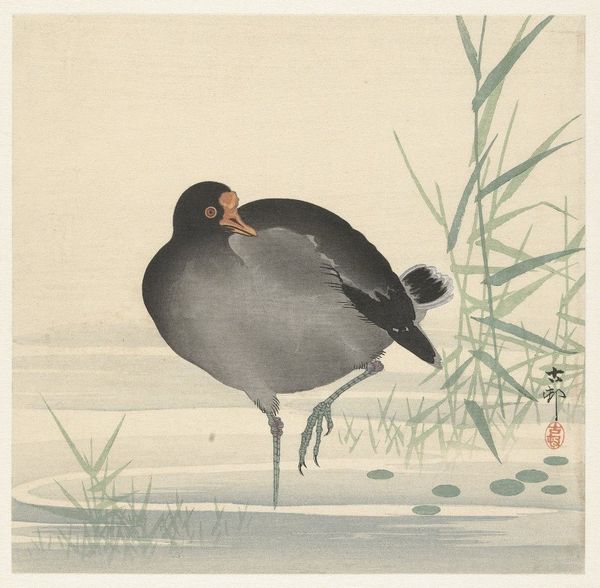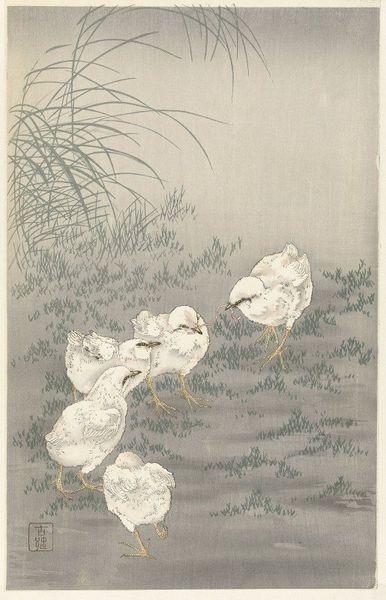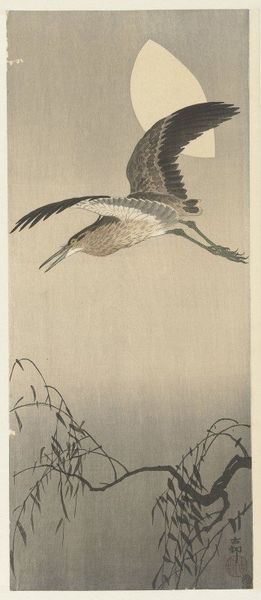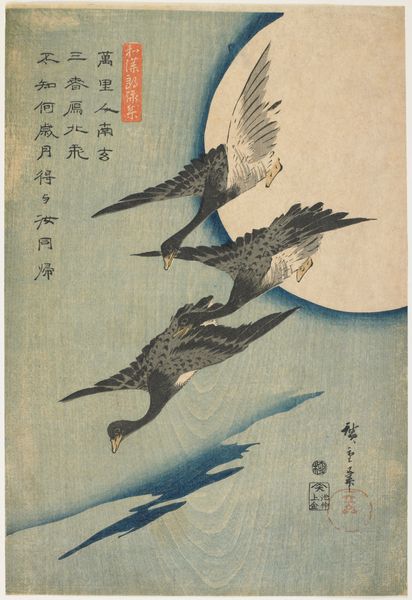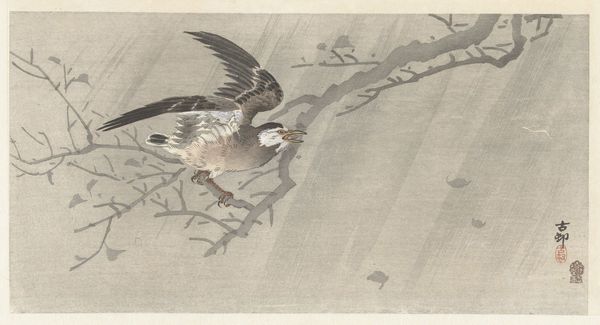
Copyright: Public Domain: Artvee
Editor: Okay, next up we have "Large Knot Sandpipers" by Ohara Koson, dating from around 1900 to 1930. It's a watercolor print, and it strikes me as so serene, with these two birds standing by the ocean. The simplicity is just lovely. What stands out to you? Curator: Well, I see it within the broader context of the Shin-hanga movement, this revival of ukiyo-e printmaking in early 20th-century Japan. Think about what's happening globally – increasing Western influence, anxieties about preserving cultural identity. These prints, widely circulated and collected, become powerful statements. Notice how Koson presents nature – are they just decorative, or do they perform some symbolic function? Editor: I guess I hadn’t considered the socio-political element. Decorative at first glance, but knowing about the Shin-hanga movement… Maybe these birds embody a longing for a simpler, more traditional way of life? Curator: Precisely! And think about who was buying these prints. Western tourists, eager for exotic souvenirs, but also a growing Japanese middle class, asserting its own identity. These prints were commodities, circulated in different markets, thus serving diverse, possibly even contradictory, roles. Editor: So, it's not just about the artist's intention, but also how the artwork functions within society and the art market. Were there particular exhibition spaces or galleries that promoted this type of work? Curator: Absolutely. Galleries specializing in Japanese art, both domestically and abroad, played a vital role in shaping the reception of these works. Their framing, both literally and figuratively, contributed to constructing "Japaneseness" for public consumption. That also makes me wonder: does their success change our understanding of the bird imagery? Editor: Wow, it gives me so much to consider... The blend of art, commerce, and cultural identity! I see that even a simple image can speak volumes about its time. Curator: Indeed. Art doesn't exist in a vacuum. Considering its journey—creation, circulation, reception—illuminates its complex role within a broader cultural landscape.
Comments
No comments
Be the first to comment and join the conversation on the ultimate creative platform.
